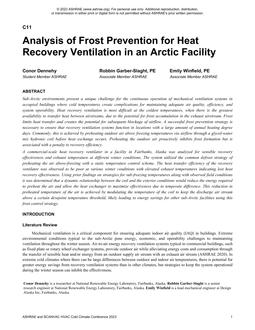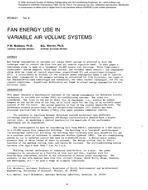To determine the ‘operating characteristics of HVAC systems, it is necessary to measure airflows in many of the system’s ducts. In the past, these were one-time measurements, performed at start-up as a part of system balancing. With VAV (variable air volume), economizer, and EMS (energy management systems), airflows change over time, and a number of different strategies are employed to determine airflows.
The accuracy of these measurements can have a dramatic effect on energy costs in a building. When these values are significantly in error, excessive energy use or poor ventilation may result. Airflow rates may be determined in a number of ways, as outlined in a number of standards. These standards are primarily for one-time measurements and may not be suited for on-line flow measurements, due to inlet conditions, pressure drop factors, or the complexity of output flow calculations.
This paper will examine a number of methods for determining building heating, ventilating, and air conditioning (HVAC) airflows. As many of these methods are relatively new, with undetermined reliability and sensor drift, all systems should include a means of sensor calibration including a reset capability. Errors in sensor outputs can cause energy use to be several times the cost of the frequent calibration that may be required.
Units: Dual
Citation: Symposium, ASHRAE Transactions, 1985, vol. 91, pt. 2B, Honolulu, HI
Product Details
- Published:
- 1985
- Number of Pages:
- 6
- File Size:
- 1 file , 570 KB
- Product Code(s):
- D-HI-85-22-4


